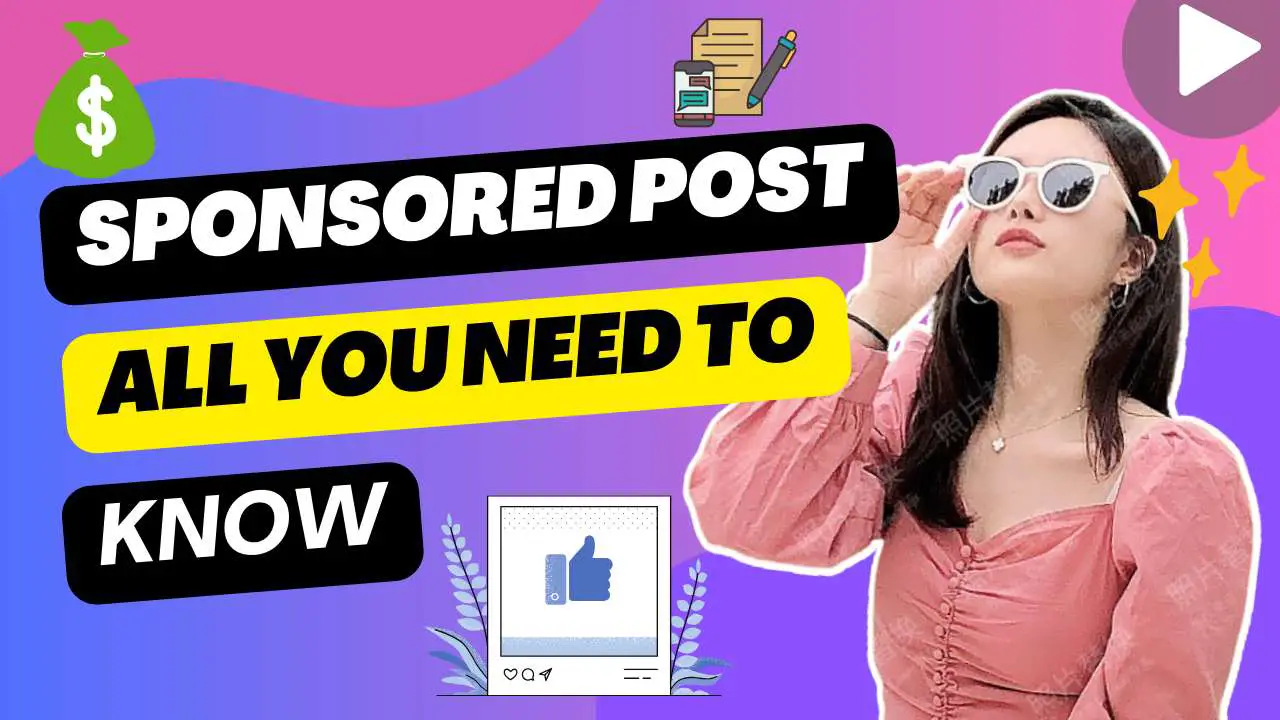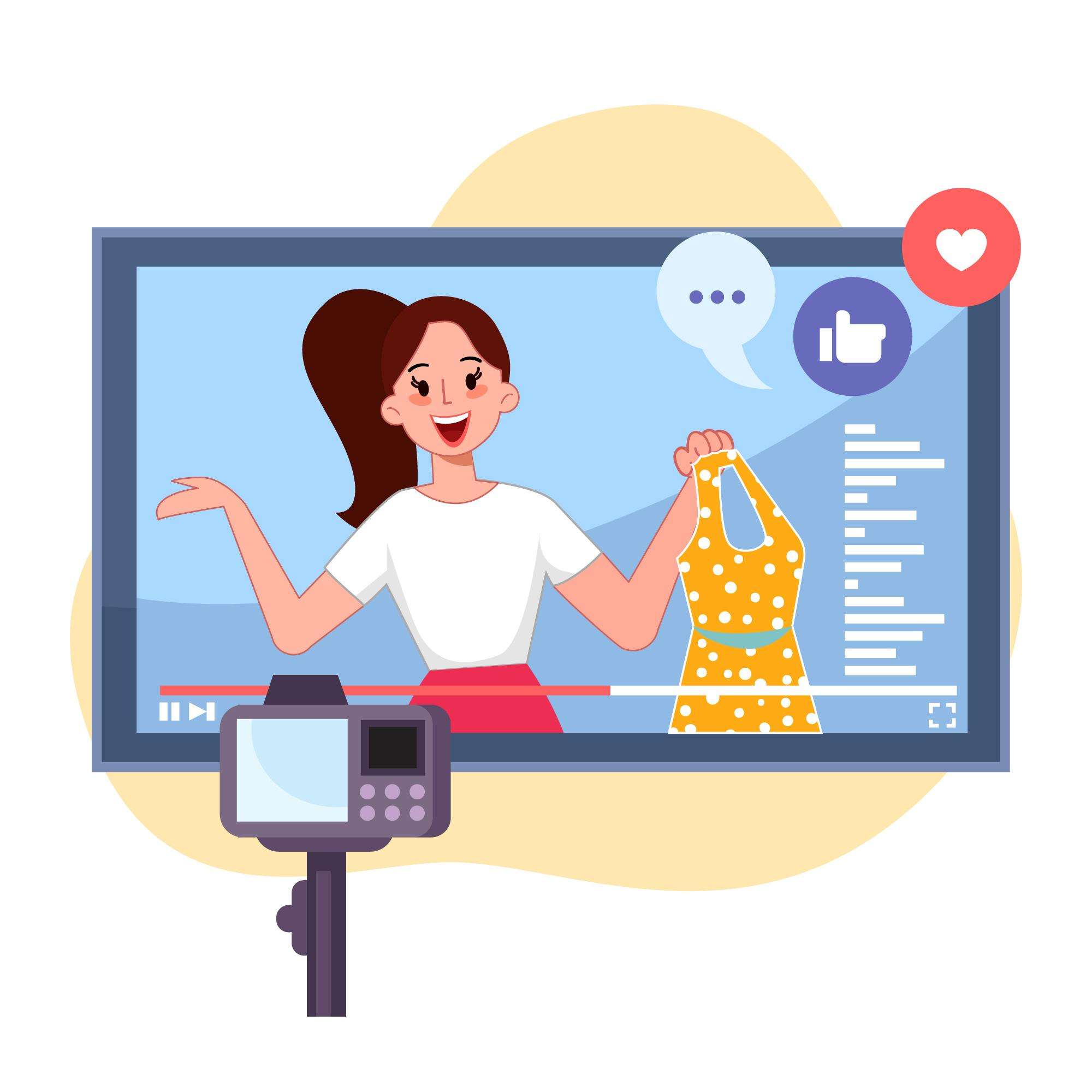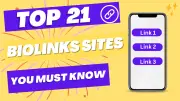Sponsored Posts: Everything You Need to Know
Sponsored posts have become integral to the digital landscape, serving as a strategic avenue for businesses to amplify their reach and engagement. These curated promotional pieces seamlessly blend into users' online experiences, delivering targeted content that aligns with their interests. In this dynamic era of social media and online platforms, sponsored posts offer a unique opportunity for brands to connect authentically with their audience, fostering brand awareness and customer loyalty.
As a powerful marketing tool, sponsored posts enhance visibility and enable businesses to tailor their messages, ensuring relevance and resonance. This intro explores the evolving landscape of sponsored content, illuminating its role in modern marketing strategies and its impact on audience interaction.

What are Sponsored Posts?
Sponsored posts are paid promotional content on social media, where individuals or brands collaborate with influencers to showcase products, services, or messages. Marked with tags like 'Sponsored' or 'Paid Partnership,' these posts leverage the influencer's audience to enhance brand visibility and credibility.
Why are sponsored posts important?
Sponsored posts are crucial in modern marketing for several reasons:
1. Increased Reach: Leveraging influencers' existing audience expands a brand's reach to potential customers who might not have been reached through traditional advertising.
2. Credibility and Trust: Influencers are often perceived as trustworthy sources. When they endorse a product or service, it lends credibility and builds trust with their followers.
3. Targeted Marketing: Sponsored posts allow precise targeting based on an influencer's audience demographics, ensuring that the content reaches the most relevant and interested audience.
4. Authenticity: Influencers create content that resonates with their followers' interests, making sponsored posts feel more authentic and less intrusive than traditional ads.
5. Engagement and Interactivity: Sponsored posts often generate high engagement levels, with influencers and their audience interacting through likes, comments, and shares.
6. Brand Awareness: Consistent visibility through sponsored posts increases brand awareness, making it more likely for the audience to remember and consider the promoted brand.
7. Adapting to Consumer Behavior: As consumers increasingly turn to social media for recommendations and information, sponsored posts align with the way people discover and engage with products and services.
8. Cost-Effective Advertising: Compared to traditional advertising channels, sponsored posts can offer a more cost-effective way to reach a specific audience.
Benefits of Sponsored Posts for Creators
1. Monetization
Sponsored posts are a lucrative avenue for content creators to monetize their work, turning their passion into a source of income while maintaining creative control.
2. Collaborations and Networking
Brand partnerships serve as a gateway for creators to collaborate with peers and establish valuable connections within their industry, fostering professional growth.
3. Content Opportunities
Sponsored posts bring diverse content opportunities, allowing creators to showcase a variety of products and services, keeping their content fresh and engaging for their audience.
4. Audience Growth
Collaborations with brands expose creators to new audiences. This exposure contributes to organic audience growth as followers from the brand's community often become long-term supporters.
5. Professional Development
Negotiating deals, effective communication, and project management are integral parts of sponsored posts. These experiences contribute to the continuous professional development of creators, enhancing their skill set.
6. Financial Support
Sponsored posts offer creators a reliable income stream, providing the financial support needed to sustain and expand their content creation endeavors, ensuring the longevity of their creative pursuits.
7. Enhanced Visibility
Collaborating with brands elevates a creator's visibility within their niche. This recognition establishes them as an influential figure, reinforcing their authority and influence in their field.
Types of Sponsored Posts

Sponsored posts can come in various formats, depending on the platform and the campaign's goals. Here are some of the most common types of sponsored posts:
1. Sponsored Blog Posts
Sponsored blog posts are articles written by bloggers or content creators that feature a brand's product or service. These posts typically provide in-depth information, reviews, or tutorials related to the sponsored item. They often include personal experiences and opinions to maintain authenticity while promoting the product.
2. Social Media Sponsored Posts
Paid promotional content on social media platforms like Instagram, Facebook, Twitter, and TikTok can take various forms, each designed to engage users in different ways and for different durations:
In-feed posts: These are regular posts that appear directly in users' timelines as they scroll through the platform. They are often designed to blend in with organic content but are marked as sponsored. These posts can include a mix of images, videos, or carousels (multiple slides) and typically have a call-to-action button like 'Shop Now,' 'Learn More,' or 'Sign Up.'
Stories: Stories are short-lived content that disappear after 24 hours, providing an element of urgency. These vertical images or videos are often interactive, with features like polls, questions, and clickable elements such as 'Swipe Up' links (on Instagram) or 'See More' options, driving direct engagement or purchases.
Reels or TikToks: These are short-form, highly engaging video content designed for quick consumption, typically lasting between 15 and 60 seconds. They often leverage trending music, effects, and hashtags to increase reach. Reels and TikToks are ideal for showcasing a product or brand in a fun, relatable, or viral-worthy way.
IGTV or YouTube videos: These longer-form videos, often lasting from a few minutes to over an hour, allow for more in-depth content. They are ideal for tutorials, interviews, or behind-the-scenes footage. On YouTube, these videos can be monetized with ads, while IGTV offers direct linking to products or external websites.
In addition to these formats, social media sponsored posts frequently use platform-specific features designed to drive conversions, such as shoppable tags that allow users to directly purchase a product without leaving the app, or swipe-up links that provide a seamless transition to external landing pages or product pages. These features help create a frictionless user experience, optimizing the path from awareness to purchase.
3. Influencer Partnerships
Brands collaborate with influencers to reach their engaged audiences. These partnerships can involve:
- Product reviews
- Unboxing videos
- Lifestyle integration posts
- Sponsored trips or events
Influencer partnerships can span multiple posts or platforms and often feel more organic than traditional advertisements.
4. Sponsored Videos
These are video content created specifically to promote a product or service. They can appear on platforms like YouTube, Vimeo, or embedded in blog posts. Sponsored videos might include:
- Product demonstrations
- How-to guides
- Behind-the-scenes looks at a brand
- Interviews with brand representatives
5. Affiliate Marketing Posts
While not always explicitly labeled as sponsored, affiliate marketing posts promote products with special tracked links. Content creators earn a commission on sales generated through these links. These posts can appear on blogs, social media, or in email newsletters.
6. Native Advertising
Native ads are designed to match the look and feel of the platform they appear on. They might be articles on news websites, suggested posts on social media, or recommended content widgets. While they're labeled as sponsored, they often blend seamlessly with organic content.
7. Podcast Sponsorships
In podcast sponsorships, hosts read ad copy or organically integrate product mentions into their shows. These can be pre-roll (at the beginning), mid-roll (in the middle), or post-roll (at the end) advertisements.
8. Newsletter Sponsorships
Paid promotions within email newsletters can take various forms:
- Dedicated emails entirely about a sponsor's product
- Banner ads within newsletters
- Brief sponsor mentions or product features
9. Sponsored Reviews
These are detailed evaluations of products or services, often found on review sites, YouTube channels, or blogs. While sponsored, they typically aim to provide honest assessments to maintain credibility.
10. Co-created Content
Brands and content creators collaborate to produce content that serves both parties' interests. This might be a jointly hosted event, a limited-edition product, or a series of posts developed in partnership.
Each type of sponsored post has its strengths and is suited to different marketing objectives. The key to successful sponsored content is maintaining authenticity, providing value to the audience, and clearly disclosing the sponsored nature of the content to maintain trust and comply with advertising regulations.
How to find sponsored post opportunities?

Finding sponsored post opportunities involves a combination of proactive outreach, networking, and utilizing platforms that connect influencers with brands. Here's a guide:
1. Social Media Platforms
Identify brands in your niche on platforms like Instagram and Twitter. Follow them, engage with their content, and express your interest in collaboration. Active interaction can grab a brand's attention.
2. Influencer Marketing Platforms
Register on platforms like AspireIQ, Traackr, or Influence.co. These connect influencers with brands seeking collaborations. Complete your profile to attract brands looking for influencers like you.
3. Networking
Participate in industry events, conferences, or workshops. Network with both brands and fellow influencers. Personal connections made at these events often lead to sponsorship opportunities.
4. Brand Outreach
Reach out to brands via email or social media. Craft a compelling pitch showcasing your audience, engagement, and the unique value you can bring to their brand. Personalize your outreach for better results.
5. Create a Media Kit
Design a comprehensive media kit displaying your audience demographics, engagement rates, and previous collaborations. Brands should easily grasp the value you offer. A professional media kit streamlines the collaboration process.
6. Hashtags and Keywords
Explore popular hashtags related to sponsored posts in your niche. Brands often discover influencers through these tags. Regularly use and monitor relevant hashtags to stay visible.
7. Collaboration Platforms
Enlist in influencer communities on platforms like GrapeVine, Tribe, or Collabstr. These communities connect influencers with brands seeking collaborations. Actively engage to access exclusive opportunities.
8. Keep an Eye on Trends
Follow industry trends and upcoming product launches. Brands frequently seek influencers to generate buzz around new releases. Being aware of trends positions you as a valuable collaborator.
9. Engage with PR Agencies
Forge connections with public relations agencies. These agencies often manage influencer collaborations for brands. Building relationships with PR agencies can lead to potential partnerships.
10. Check Brand Websites
Explore dedicated influencer partnership pages on brand websites. Some brands provide information about collaboration opportunities. Regularly check these pages to discover potential partnerships that align with your content.
Remember, consistency and professionalism in your content and outreach efforts can significantly enhance your chances of securing sponsored post opportunities.
How to negotiate sponsored post deals?

1. Clearly Define Your Value:
Clearly articulate the value you bring, emphasizing your audience, engagement, and niche expertise to demonstrate why a brand should collaborate with you.
2. Understand Your Worth:
Know your worth by researching industry standards for influencers of your size and engagement, ensuring you negotiate fair compensation.
3. Establish Long-Term Relationships:
Aim for long-term partnerships by showcasing the benefits of ongoing collaborations, fostering trust and loyalty with brands.
4. Flexibility in Collaboration:
Be open to negotiation on collaboration terms, such as content format, posting schedule, and creative input, while ensuring they align with your brand and values.
5. Data and Analytics:
Leverage data and analytics to provide concrete evidence of your impact, offering metrics on reach, impressions, and audience demographics to strengthen your negotiating position.
6. Include Additional Value:
Go beyond basic deliverables by offering added value, such as extended social media coverage, blog features, or exclusive promotions to sweeten the deal.
7. Negotiate Beyond Monetary Compensation:
Consider negotiating non-monetary benefits, such as product samples, event invitations, or exclusive access, expanding the value of the collaboration.
8. Set Clear Expectations:
Clearly define expectations for both parties, including deliverables, timelines, and any specific requirements, to avoid misunderstandings during and after the collaboration.
9. Be Professional and Polite:
Maintain professionalism throughout negotiations, remaining polite and constructive even if terms need adjustment, fostering positive relationships with brands.
10. Know When to Walk Away:
Recognize when a deal isn't mutually beneficial. Be willing to walk away if terms don't align with your values or if the collaboration doesn't contribute to your long-term goals.
How to create a sponsored post disclosure?
Crafting an effective sponsored post disclosure is pivotal for maintaining credibility and meeting legal obligations. Commence your post with a succinct and prominent statement, unmistakably indicating the sponsored nature of the content. Utilize straightforward language that resonates with your audience and aligns with the platform's guidelines. Ensure high visibility through strategic placement and consider employing distinctive formatting.
Be explicit about the collaboration details, whether it involves monetary compensation, gifted items, or other considerations. Transparency is key. If sharing on social media, leverage built-in features like Instagram's "Paid Partnership" tag for added clarity. The disclosure can harmonize with your content style but should be unequivocal.
Remember, honesty builds trust. Audiences appreciate transparency, and a clear disclosure strengthens your relationship with them. Regularly reassess and adapt your disclosure practices to align with evolving regulations and platform policies. This commitment to transparency not only upholds your credibility but also ensures legal compliance in the dynamic landscape of influencer marketing.

Case studies of successful sponsored post campaigns
Airbnb's #LiveThere Campaign
Objective: Airbnb aimed to promote its unique accommodation options and encourage users to "live like a local" when traveling.
Strategy: They collaborated with influencers and used visually appealing content to showcase Airbnb properties in various locations.
Results: The campaign generated widespread engagement and increased brand awareness. The hashtag #LiveThere gained traction on social media, and users began sharing their own experiences, contributing to the campaign's success.
Daniel Wellington's Influencer Marketing
Objective: Daniel Wellington, a watch company, aimed to increase brand visibility and drive sales.
Strategy: They collaborated with influencers across social media platforms, providing them with free watches to showcase in their posts.
Results: The campaign resulted in a significant increase in brand awareness, and the influencer-generated content helped create a trendy and aspirational image for the brand. The strategy was particularly effective in targeting a younger audience.
Coca-Cola's "Share a Coke" Campaign
Objective: Coca-Cola aimed to personalize its brand and increase engagement with consumers.
Strategy: The company replaced its logo on Coke bottles with popular names and encouraged people to share a Coke with friends and family. Social media played a crucial role in the campaign, with users posting photos of personalized bottles.
Results: The campaign went viral, leading to a boost in sales and user-generated content. The personalization aspect resonated well with consumers, making it one of the most successful Coca-Cola campaigns.
Nike's Instagram Campaigns
Objective: Nike consistently uses sponsored posts on Instagram to promote its products and connect with its target audience.
Strategy: Nike collaborates with athletes and influencers to create visually compelling content that highlights the brand's values of athleticism, empowerment, and innovation.
Results: Nike's sponsored posts consistently generate high engagement and contribute to the brand's overall strong presence on social media. The campaigns often align with larger brand initiatives, reinforcing Nike's position in the market.
Best practices for Sponsored Posts
Certainly! Here are some best practices for creating sponsored posts:
1. Clear Disclosure: Ensure that sponsored content is clearly labeled as such to maintain transparency with your audience. Use hashtags like #sponsored or #ad to clearly indicate that the post is a paid promotion.
2. Authenticity: Maintain your brand voice and authenticity when creating sponsored posts. Align the content with your brand values and ensure that it resonates with your audience. This will help build trust and credibility.
3. Relevance: Select sponsors that align with your audience's interests and preferences. The content should be relevant and provide value to your followers. Choose partners whose products or services complement your brand and are genuinely beneficial to your audience.
4. Creative and Engaging Content: Create visually appealing and engaging content that captures your audience's attention. Use high-quality images, videos, and compelling captions to make the sponsored post stand out.
5. Storytelling: Tell a story or share a personal experience related to the sponsored product or service. This helps create an emotional connection with your audience and makes the content more relatable.
6. Call-to-Action: Include a clear call-to-action in your sponsored post to encourage your audience to take the desired action. Whether it's visiting a website, making a purchase, or entering a giveaway, guide your audience on what you want them to do next.
7. Compliance with Advertising Guidelines: Familiarize yourself with the advertising guidelines and regulations in your region. Ensure that your sponsored posts comply with these guidelines to avoid any legal issues or penalties.
8. Monitor Performance: Track the performance of your sponsored posts using analytics tools. Measure engagement, click-through rates, conversions, and other relevant metrics to assess the effectiveness of your campaigns. Use this data to optimize future sponsored content.
9. Transparency in Product Reviews: If you are reviewing a sponsored product, ensure that your review is honest and unbiased. Provide a balanced perspective, highlighting both the pros and cons of the product. This will help maintain your credibility and trust with your audience.
10. Engage with Your Audience: Encourage your followers to ask questions, share their opinions, or provide feedback about the sponsored post. Engage with their comments, respond to their queries, and show genuine interest in their thoughts. This fosters a sense of community and demonstrates your commitment to open communication with your audience.
Conclusion
Creating sponsored posts is about being real, open, and mindful of your audience. It's crucial to clearly say when a post is sponsored and to choose collaborations that fit your style and your audience's interests. Keep it genuine, engage with your followers, and follow the rules. Fair pay, learning from each collaboration, and using data to improve is the key to success.
Remember, your followers trust you, and that trust is built on honesty. Every sponsored post is a chance to create something valuable, not just for your brand but for the community you've built. So, keep it real, stay connected, and enjoy the journey of sharing content that matters.





